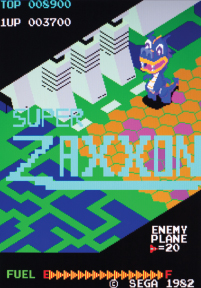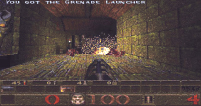Video Game Genres
Electronic games inhabit so many playing platforms and devices, and cover so many genres, it is not easy to categorize them. The game industry, as represented by the Electronic Software Association, organizes games by gameplay—the way in which the rules structure how players interact with the game, rather than by any sort of visual or narrative style. There are many hybrid forms, but the major gameplay genres are discussed in the following sections. (See Figure 3.1 for a breakdown of top video game genres.)

TOP VIDEO GAME GENRES BY UNITS SOLD, 2012
Source: Entertainment Software Association, “Essential Facts about the Computer and Video Game Industry,” 2013.
Note: Percentages were rounded up to the next decimal point.
Action and Shooter Games
Usually emphasizing combat-type situations, action games ask players to test their reflexes, and to punch, slash, shoot, or throw as strategically and accurately as possible so as to strategically make their way through a series of levels. Some action games feature hand-to-hand combat (e.g., Street Fighter, Marvel vs. Capcom); others feature more sophisticated weaponry and obstacles, such as bladed spears against groups of enemy combatants (e.g., Hidden Blade; Bushido Blade). Shooter games offer a selection of guns and missiles for obliterating opponents.
Most shooter games have a first-person shooter (FPS) perspective, which allows players to feel like they are actually holding the weapon and to feel physically immersed in the drama. (See Table 3.1 for more on major video game conventions.) Doom, for example, released in 1993, was one of the first major FPS breakthroughs, requiring players to shoot their way through a military base on Mars’s moon, killing the demons from Hell using a pistol, and moving up to a chainsaw, shotgun, chaingun, rocket launcher, plasma rifle, and finally the coveted “BFG 9000,” all the while negotiating pits of toxic slime and locating the “exit door” that leads to the next level. Halo, Microsoft’s impressive launch title for the Xbox 360 in 2001, has become the top FPS game of all time. In the Halo series (the fourth sequel was released in 2012), players assume the identity of “Master Chief,” a super soldier living in the twenty-sixth century and fighting aliens, with the ultimate goal of uncovering secrets about the secret ring–shaped world, Halo. The weapons allotted to “Master Chief” all require the player to think strategically about how and when to launch them. Plasma weapons need time to cool if fired too quickly; guns need both ammunition and time to reload; fragmentation grenades bounce and detonate immediately; plasma grenades attach to the target before exploding. Players have to negotiate all of these (and many more) variables as they move through various futuristic landscapes in order to unlock the secrets of Halo.
Maze games like Pac-Man also fit into the “action” genre, involving maze navigation to avoid or chase adversaries. Finally, platform games gained notoriety through the very successful Super Mario Bros. series. Using quick reflexes and strategic time management, players move Mario and Luigi between various platform levels of the Mushroom Kingdom in order to rescue Princess Toadstool (later called Princess Peach) from Bowser.
TABLE 3.1
MAJOR VIDEO GAME CONVENTIONS
This table breaks down six common elements of video game layout. Many of these elements have been in place since the earliest games and continue to be used today.
| Convention | Description | Examples | Visual Representation |
| Avatars | Onscreen figures of player identification | Pac-Man, Mario from the Mario Bros. series, Sonic the Hedgehog, Link from Legend of Zelda |

|
| Bosses | Powerful enemy characters that represent the final challenge in a stage or the entire game | Ganon from the Zelda series, Hitler in Castle Wolfenstein, Dr. Eggman from Sonic the Hedgehog, Mother Brain from Metroid |

|
| Vertical and Side Scrolling | As opposed to a fixed screen, scrolling that follows the action as it moves up, down, or sideways in what is called a “tracking shot” in the cinema | Platform games like Jump Bug, Donkey Kong, and Super Mario Bros.; also integrated into the design of Angry Birds |

|
| Isometric Perspective (also called Three-Quarters Perspective) | An elevated and angled perspective that enhances the sense of three-dimensionality by allowing players to see the tops and sides of objects | Zaxxon, StarCraft, Civilization, and Populous |

|
| First-Person Perspective | Presents the gameplay through the eyes of your avatar | First-person shooter (FPS) games like Quake, Doom, Halo, and Call of Duty |

|
| Third-Person Perspective (or Over-the-Shoulders Perspective) | Enables you to view your heroic avatar in action from an external viewpoint | Tomb Raider, Assassin’s Creed, and the default viewpoint in World of Warcraft |

|
Adventure Games
“Any game that does move at your own pace, like adventure games do, you don’t have to worry about dying or dealing with enemies and bosses and monsters; you have a more ponderous, thoughtful experience.”
TIM SCHAFER, FOUNDER OF DOUBLE FINE PRODUCTIONS, APRIL 2012
Developed in the 1970s, adventure games involve a type of gameplay that is in many ways the opposite of action games. Typically nonconfrontational in nature, adventure games such as Myst require players to interact with individual characters and the sometimes hostile environment in order to solve puzzles. In the case of Myst (released in 1991), the player is “the Stranger” who travels to different worlds and finds clues to solve various puzzles, that, if solved correctly, lead to the “deserted” island of Myst. The genre peaked in popularity in 1993 and has spawned derivative genres such as action-adventure (e.g., Zelda, Metroid ) and survival horror games (e.g., Resident Evil ), which are inspired by horror fiction.
Role-playing Games
Role-playing games (RPGs) are typically set in a fantasy or sci-fi world in which each player (there can be multiple players in a game) chooses to play as a character that specializes in a particular skill set (such as magic spells or “finesse”). Players embark on a predetermined adventure and interact with the game’s other inhabitants and each other, making choices throughout the game that bring about various diverse outcomes. Neverwinter Nights (2002), for example, challenges its players to collaboratively collect four “Waterdhavian creatures” needed to stop the “Wailing Death plague,” defeat the cult that is spreading the plague, and finally thwart an attack on the city of Neverwinter. The game is derived from Dungeons & Dragons, one of the most popular face-to-face, paper-and-pencil role-playing games. More complex role-playing games, like the Final Fantasy series, involve branching plots and changing character destinies. MMORPGs are obviously a subgenre of this game category. Other subgenres, such as the action role-player games, are some of the most successful video games on the market. A good example is the Diablo series, which combines combat and role-playing in a horror and dark fantasy setting. When Blizzard released the third installment, Diablo III, in May 2012, it sold 3.5 million copies in twenty-four hours, becoming the fastest-selling PC game of all time.13
Strategy and Simulation Games
“I remember carefully managing my bank roll, stocking up with supplies, spare wagon parts, clothes, victuals. I charted my course, past Fort Kearney, on towards Laramie, then making the choice at South Pass: the long route to Fort Bridger, or brave the ford and head right to Soda Springs? I recall well the warning the game gave as winter approached; I felt myself shivering in my chair, checking my stock of food and ammunition nervously.”
PHILIP A. LOBO, OPEN LETTERS MONTHLY, FEBRUARY 2010
Strategy video games often involve military battles (real or imaginary), and focus on gameplay that requires careful thinking and skillful planning in order to achieve victory. Unlike FPS games, the perspective in strategy games is omniscient, with the player surveying the entire “world” or playing field and making strategic decisions—such as building bases, researching technologies, managing resources, and waging battles—that will make or break this world. No doubt the most popular real-time strategy game (RTS) is Blizzard’s StarCraft, which is played competitively throughout South Korea and televised to large audiences. Taking place during the twenty-sixth century in a distant part of the Milky Way galaxy, StarCraft involves three races (one human) that are at war with each other. To develop better strategic advantages, players download and memorize maps, study up on minute game details (such as race characteristics), and participate in StarCraft–centered advice boards.
Like strategy games, simulation games involve managing resources and planning worlds, but these worlds are typically based in reality. A good example is Sim City, which asks players to build a city given real-world constraints, such as land-use zoning (commercial, industrial, residential); tax rates (to tax or not to tax); and transportation (buses, cars, trams). A player may also face unanticipated natural disasters such as floods or tornadoes. Another example is The Oregon Trail, an educational simulation game that aims at reproducing the circumstances and drastic choices faced by white settlers traveling the 2,000-mile journey from Independence, Kansas, to the Willamette Valley in Oregon. Throughout the game, players make choices to help their ox-driven wagon parties survive numerous potential horrors, including measles, dysentery, typhoid, cholera, snake bites, drowning, physical injuries, floods, mountains, heat, and cold, all the while maintaining provisions and predicting weather conditions. First developed by educators in 1971, The Oregon Trail has been played by millions of students.
Casual Games
This category of gaming, which encompasses everything from Minesweeper to Angry Birds to Words with Friends, includes games that have very simple rules and are usually quick to play. Casual games have a historical starting point—1989—when the game Tetris came bundled with every new Game Boy (Nintendo). Tetris requires players to continuously (frantically, for some) rotate colored blocks and fit them into snug spaces before the screen fills up with badly stacked blocks. There is no story to Tetris, and no real challenge other than mastering the rather numbing pattern of rotating and stacking, a process that keeps getting faster the higher the level achieved. For many people, the ceaseless puzzle became like a drug: Millions of people have purchased and played Tetris since its release. Today, Tetris has given way to Angry Birds and other such games that have exploded in popularity due in large part to the rise in mobile devices.
Sports, Music, and Dance Games
“I remember carefully managing my bank roll, stocking up with supplies, spare wagon parts, clothes, victuals. I charted my course, past Fort Kearney, on towards Laramie, then making the choice at South Pass: the long route to Fort Bridger, or brave the ford and head right to Soda Springs? I recall well the warning the game gave as winter approached; I felt myself shivering in my chair, checking my stock of food and ammunition nervously.”
PHILIP A. LOBO, OPEN LETTERS MONTHLY, FEBRUARY 2010
“There is apparently a video game for every sport except for competitive mushroom picking,” commented a Milwaukee Journal editorial in 1981.14 Today, there really does seem to be a 3-D game for every sport. Gaming consoles first featured 3-D graphics in the early to mid-1990s with the arrival of Sega Saturn and Sony’s PlayStation in 1994. Today’s game technology, with infrared motion detectors, accelerometers (a device that measures proper acceleration), and tuning fork gyroscopes (a device that determines rotational motion), allows players to control their avatar through physical movements, making the 3-D sports games experience even more realistic. Players in a soccer game, for example, might feel as though they are in the thick of things, kicking, dribbling, shooting, and even getting away with a foul if referees aren’t watching. In sports games, players either engage in competitive gameplay (player vs. player) or cooperative gameplay (two or more teammates work together against the artificial intelligence, or A.I., opponents within the game).
One of the most consistently best-selling sports games is Madden NFL, which is based on famed NFL football player and then coach John Madden. Among the game’s realistic features are character collisions with varying speeds and trajectories that differ based on player control, sophisticated playbooks and player statistics, and voice commentary that allows players to hear the game as if it were a real TV broadcast. With Xbox Kinect functionality, players can even select and alter screen actions with the power of their own voice (they are Madden, screaming from the sidelines).
“These games are not for everyone, it’s true, but it’s for more of everyone than anything else I know.”
JOHN DOERR, ON CASUAL GAMES, 2011
Other experiential games tie into music and dance categories. Rock Band, developed by Harmonix Systems and published by MTV Games and Electronic Arts, allows up to four players to simulate the popular rock band performances of fifty-eight songs—from the Pixies and OK Go to Black Sabbath and the Rolling Stones—as well as more than fourteen hundred additional downloadable songs for $1.99 apiece. Each instrument part (lead guitar, bass, drums, and vocal) can be played at one of four difficulty levels (Easy, Medium, Hard, and Expert), and if a player doesn’t keep up, they “fail” out of the song and their instrument is muted. The gameplay is derivative of Guitar Hero (vertical scrolling, colored music notes, and karaoke-like vocals), but the experience of Rock Band—with four players, a variety of venues from clubs to concert halls, and screaming fans (who are also prone to boo)—is far more “real.” Dance-oriented video games such as Dance Dance Revolution and Just Dance use motion-detecting technology and challenge players to match their rhythm and dance moves to figures on the screen.